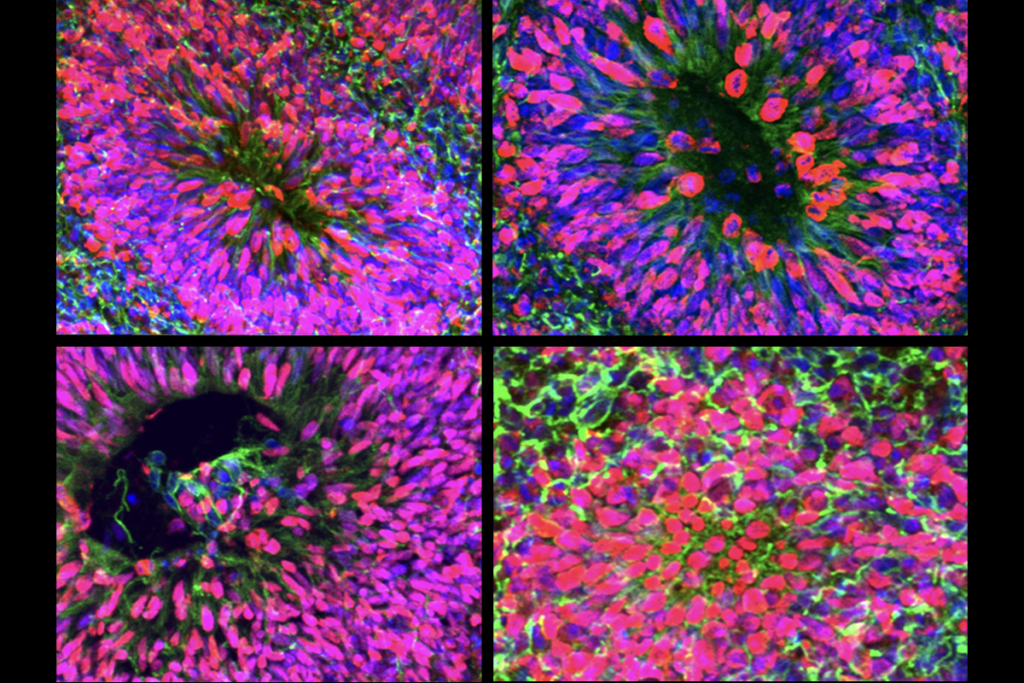WCPG 2009
Recent articles
Autism study zooms in on five-gene strip on chromosome 16
Genetic analysis of one Belgian family with a history of autism has pinpointed a piece of DNA on chromosome 16, within a segment thought to be missing in about one percent of all cases of autism. The unpublished data was presented on Saturday at the World Congress of Psychiatric Genetics in San Diego.

Autism study zooms in on five-gene strip on chromosome 16
Genetic analysis of one Belgian family with a history of autism has pinpointed a piece of DNA on chromosome 16, within a segment thought to be missing in about one percent of all cases of autism. The unpublished data was presented on Saturday at the World Congress of Psychiatric Genetics in San Diego.
Massive genomics project unveils schizophrenia results
The Psychiatric GWAS Consortium has released its first batch of analyses, identifying several significant common variations associated with schizophrenia. The results were presented Sunday at the World Congress of Psychiatric Genetics in San Diego.

Massive genomics project unveils schizophrenia results
The Psychiatric GWAS Consortium has released its first batch of analyses, identifying several significant common variations associated with schizophrenia. The results were presented Sunday at the World Congress of Psychiatric Genetics in San Diego.
Variants in synaptic protein linked to autism
Scientists have identified several autism-specific variants in a gene that lies within a chromosomal region linked to the disorder, according to a poster presented at the World Congress of Psychiatric Genetics in San Diego.

Variants in synaptic protein linked to autism
Scientists have identified several autism-specific variants in a gene that lies within a chromosomal region linked to the disorder, according to a poster presented at the World Congress of Psychiatric Genetics in San Diego.
Variants associated with autism over-hyped, company says
Variations linked to autism and schizophrenia crop up in people with a large variety of conditions, including bipolar disorder, seizures and obsessive-compulsive disorder, as well as in healthy people. This notion gained new support from unpublished data presented at the World Congress for Psychiatric Genetics in San Diego.

Variants associated with autism over-hyped, company says
Variations linked to autism and schizophrenia crop up in people with a large variety of conditions, including bipolar disorder, seizures and obsessive-compulsive disorder, as well as in healthy people. This notion gained new support from unpublished data presented at the World Congress for Psychiatric Genetics in San Diego.
Explore more from The Transmitter
New organoid atlas unveils four neurodevelopmental signatures
The comprehensive resource details data on microcephaly, polymicrogyria, epilepsy and intellectual disability from 352 people.

New organoid atlas unveils four neurodevelopmental signatures
The comprehensive resource details data on microcephaly, polymicrogyria, epilepsy and intellectual disability from 352 people.
Can neuroscientists decode memories solely from a map of synaptic connections?
Five experts discuss the progress, possibilities and hurdles of decoding a “nontrivial” memory from an organism just by analyzing its brain connectivity patterns.
Can neuroscientists decode memories solely from a map of synaptic connections?
Five experts discuss the progress, possibilities and hurdles of decoding a “nontrivial” memory from an organism just by analyzing its brain connectivity patterns.
AI-assisted coding: 10 simple rules to maintain scientific rigor
These guidelines can help researchers ensure the integrity of their work while accelerating progress on important scientific questions.

AI-assisted coding: 10 simple rules to maintain scientific rigor
These guidelines can help researchers ensure the integrity of their work while accelerating progress on important scientific questions.